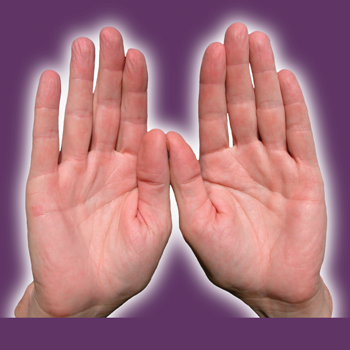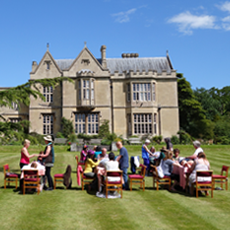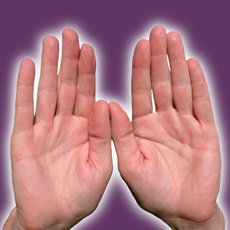by Janet Wing and Ava Wolf
This is the story of how we balanced intuition, strategy, and learned to patiently follow the thread of openness of others who supported our intention to build the Reiki Clinic in the Department of Oncology at Women & Infants Hospital in Providence, Rhode Island.
Planting the Seed
It's hard to say exactly when and where the seed for our work was planted. We both look back at a particular dramatic event when Janet was being treated in the emergency room for a heart condition, which had taken her to the hospital many times before. Her condition, although not life-threatening, was very disruptive to her life. Janet had learned Reiki in 1992 but had not been using it regularly. However, after reading the book Reiki Energy Medicine: Bringing Healing Touch to Home, Hospital, and Hospice by Libby Barnett and Maggy Chambers, she remembered she had Reiki in her hands, and on this occasion, she self-treated prior to going to the emergency room. The results were dramatic. Prior to receiving the usual medical treatment, her symptoms were much less severe, and there were none of the usual side effects from the medication she received. During this experience, she had a surprising overall sense of well being and peacefulness — not feelings usually associated with the Trauma Unit in an emergency room. While she was in the observation area, she imagined how Reiki could be useful for other patients with trauma. As one frightened elderly man was wheeled by, she knew that Reiki would be calming for him in this obviously stressful environment. It was a challenge not to jump off the gurney and put her hands on him.
Meanwhile, Ava had been steadily practicing Reiki since 1988, and was a Second Degree practitioner. She had often treated people with cancer, and had the good fortune to work with another Reiki Master in Japan giving workshops in healing and personal growth. When Janet suggested the notion of taking master training together, Ava had enough trust in the energy to know that the time was right.
We trained as Reiki Masters with Libby Barnett and Maggie Chambers from 1997 through mid-1999. We chose to train with Maggie and Libby because of their high integrity, relational ability, and their work of mainstreaming Reiki was in alignment with our intention. Our experience with Libby and Maggy has taught us the essential benefit of finding teachers who have similar values and goals. If you are interested in working in a hospital setting, we recommend finding like-minded Reiki teachers or practitioners to work with and support you to that end.
Taking Action
The first thing we did was to write a letter introducing ourselves to Dr. Cornelius "Skip" Granai, Head of the Department of Oncology. The Department had a Complementary Care Program underway, but no Reiki had been offered. We were invited to a series of four interviews and demonstrations with different levels of staff. This process took nine long months, which often left us thinking that we might be wasting our time. At the first demonstration/interview we submitted a formally written proposal for bringing Reiki into the hospital one morning a week, letters of recommendation, and client evaluations of our work. We made copies available for all who attended. Simultaneously, we applied to and were accepted by, the Rhode Island State Nurse's Association to offer Reiki training for nursing CEUs. This further enhanced our credibility.
After our first interview fortified our outer intention, we used a visual affirmation to strengthen our inner intention to become active members of the Complementary Care Team. We each made a collage that included photographs of our faces, which we glued into a photograph of the hospital staff. We also included images of material ease and abundance, directing our energy toward fair compensation for our services. At present everyone on the Complementary Care Team works on a volunteer basis; however, a fund-raiser has been planned for the purpose of generating financial support for our work.
During all interviews we worked to find common ground and build a language that could bridge our healing concepts with medical terminology. We spoke of Reiki's value as a technique for stress reduction, defining it as "energy nutrition" and an effective touch therapy. We found that the concept of Mind/Body/Spirit connection was acceptable, but avoided references to channeling, auras, energy fields, guides, and spirituality. We endeavored to "normalize" Reiki, to meet pragmatic scientific people on their own terms as much as possible.
We cultivated a "professional" image. We dressed conservatively. We demonstrated repeatedly, and the power of Reiki came through. It is important to say here that neither of us has any medical credential or experience. We simply presented ourselves as Reiki professionals. We recently learned that over a dozen other Reiki practitioners had previously been interviewed. The Director of the Complementary Care Program confided in us that we were the first "normal" Reiki practitioners she had interviewed. We're glad she saw us that way!
In the Hospital Setting
Once past the interview process, it became clear that we had to prove to the medical staff that Reiki would benefit the patients. Whenever possible, we treated staff, allowing them to experience the benefits firsthand. It was clear we were over the first hump when the nurses started to ask for our help with their patients.
Initially, we gave individual mini-sessions to patients during their chemotherapy treatments. Most patients had never heard of Reiki, so it was our job to explain it to them. We kept it simple. We introduced ourselves, explained briefly that Reiki might help them with pain, fatigue, anxiety, post-operative recovery, and side effects of chemotherapy. We distributed handouts to look at, and left the room, so no one would feel put-on-the-spot. We wanted to be sensitive to the fact that cancer patients often feel overly poked, prodded, and pressured, and we did not want Reiki to fall into this category. After a while, we would return to answer questions and see who was interested. Slowly the work gained acceptance and momentum, and people scheduled one-hour appointments in the massage therapy room. A third treatment format emerged when we were invited to treat patients on the hospital's surgical floor.
Hospitals are opening to Complementary Care services in order to maintain a competitive edge in marketing to patients as consumers. To that end, Women and Infants is currently producing a video including our work with Reiki to introduce their patients to their Complementary Care services. We're excited about the way Reiki is catching on, and are exploring ways to create hospital internships for our master level students.
Feedback
"Chemotherapy treats the body, and Reiki nurtures the Soul."
—Chemotherapy Patient
The most exciting part of our work has been seeing the results of Reiki. Patients have experienced reduction in chemotherapy side effects, neuropathy, back pain, anxiety, fatigue, and faster recovery from anesthesia. They also report a general sense of comfort, well being, and relaxation. Several nurses and a few patients have learned Reiki as a result of being treated at the Clinic. Even the most resistant nurse who barely spoke to us for months finally asked us to put our hands on her. As of this article, at least one doctor is interested in scheduling a treatment for himself.
What Worked For Us: Recommendations
- Present a professional image. Present yourself professionally in every possible way, including letterhead, business cards, brochures, dress, and vocabulary.
- Cultivate relationships. When you find an ally stay in touch, write thank-you notes, follow up on meetings and phone calls. Do what you say you're going to do when you say you're going to do it!
- Develop a resume of experience. Volunteer at any agency that the energy calls you to. Examples: Hospices, Nursing Homes, AIDS agencies. Before we came to the hospital we ran a clinic at Rhode Island Project AIDS for a year. This gave us credibility to work with people who are ill.
- Write a proposal. Be specific about what you can offer, while remaining flexible to the needs of the hospital. Keep negotiating to find what will work.
- Apply for Nursing CEUs. Call your state nurse's association for an application packet. Ask if there is a nurse education consultant to help you with the application process. We found it was well worth the $50 consultation fee to get help with writing the application.
- Persevere! Hang in there. Remember you are doing groundbreaking work, and watering the root works better than pulling at the shoots.
- Support, support, support. Work with a partner and/or stay in touch with people who inspire you in this work.
- Demonstrate Reiki. When you go for an interview, make sure that you will be given the opportunity to demonstrate Reiki. Emphasize that Reiki is experiential in nature—hard to explain but easy to experience. If this can't happen at a first meeting, arrange for a second.
- Chain of command. Once you are in a hospital, identify the chain of command and use it. Example: We were asked to treat people receiving chemotherapy. One slow day we wanted to demonstrate Reiki in the waiting room. We knew this would most likely be acceptable, but we cleared it with the appropriate administrative person. Be respectful of people's positions of authority.
- Respect boundaries. Always respect medical protocols and don't obstruct them. Maintain patient confidentiality.
- Follow the energy. Any door that opens to you is your main entrance. Do not judge any opportunity, no matter how small. An invitation by one nurse or one patient may be all you need. We have found that one opening always leads to another.
- Check your ego at the door. This work is very humbling. It is a constant reminder that it is only about us in that we are willing to show up. Serve the patients, follow and trust the energy, and remember the true healers are the patients and the Reiki.







